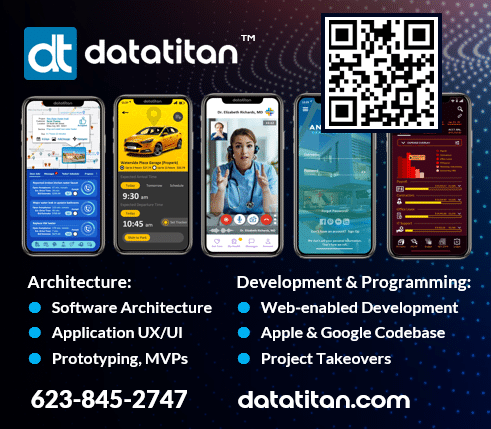How many small businesses are capitalizing on Artificial Intelligence to stay ahead of the competition, and grow their business.
It was just a few short years ago that virtually no one in the small business community had heard of or cared about the term “AI.” That was then. In 2020, ChatGPT 1.0 was released, and three years later, ChatGPT 4 followed. Today, not only has every small business heard of “AI,” but they are also trying to understand what it is, how it will impact their daily operations, and how they might be able to cost-effectively implement it in their growth strategy.
As a software architect and developer, I work with dozens of small businesses every year, building all sorts of SaaS, web-enabled, and mobile applications. These range from business operations, finance, and social media platforms to insurance, real estate, and biotech, among others. Across all these sectors, I see three recurring trends where AI is used to improve business operations.
Let’s take a look at some of these emerging trends.
Agentic AI:
If you’ve used ChatGPT, you’ve already experienced its power to create on command. In the next few years, expect to see a proliferation of apps leveraging Agentic AI assistants — intelligent systems that exhibit autonomous decision-making abilities. Instead of just asking a question and receiving an answer, agentic AI goes deeper by learning and making decisions without direct human input or interaction.
Imagine a small medical practice that offers an online appointment scheduling system on its website or mobile app. However, due to no-shows, cancellations, missed communication between staff and patients, or overlooked emails and text messages, the medical practice could be losing up to 15% of its appointments — leading to wasted time and lost revenue.
By integrating an AI assistant into the scheduling system, the practice can autonomously manage these inefficiencies. The AI can send appointment confirmation emails, follow up on cancellations by reaching out to patients on a waiting list and notify patients of newly available slots. It can also sync with Google Calendar, Outlook, and third-party scheduling systems, ensuring patients receive reminders on their preferred communication platform. Once deployed, the AI assistant can fully automate the practice’s appointment system, significantly reducing lost revenue, improving the patient experience, and freeing up staff to focus on other essential tasks.
If the AI assistant can recover even 50% of that lost 15%, it translates to a substantial win for the practice — enhancing efficiency, reducing administrative burdens, and improving patient satisfaction.
Chatbots:
A few weeks ago, I received an invoice from a company stating that I owed them $75 for an appointment no-show. It was a Saturday, and I knew they had made an accounting error. Since the company was closed, I visited their website and decided to chat with a representative.
What happened next shocked me. I began conversing with “Jean,” the company’s online representative. We chatted about the missed appointment, a scheduling mix-up, and the incorrect charge. Then, I asked Jean a question that required critical thinking. When “she” responded within one second with a 350-word reply, I immediately realized I wasn’t talking to a human — it was a chatbot. And I had no clue until that moment.
In the coming years, chatbot technology in small businesses will proliferate — not just in text-based interactions but in real-time spoken conversations using AI-powered video avatars. These avatars will engage users in either scripted or real-time discussions. One of the leading companies in this space is Synthesia, but Google’s “Project Starline” is also on the horizon. Although its launch date remains unknown, Project Starline aims to enable AI-powered, 3D video conversations to take place where users interact with a life-like avatar that laughs, displays body language, and reacts naturally to the conversation.
Similarly, OpenAI is actively working on real-time video conversations with AI avatars. While official release dates are pending, OpenAI’s SORA is a text-to-video tool capable of generating short clips from user prompts. Additionally, OpenAI is enhancing its “Voice Mode,” enabling real-time spoken conversations with AI avatars — bringing us even closer to truly interactive AI-driven customer service experiences.
HR Automation:
HireVue (Hirevue.com), a Utah-based company, is a leading example of AI-driven hiring solutions. It allows candidates to respond to AI-generated interview questions via video, with responses being shared directly with hiring managers. AI-powered Applicant Tracking Systems (ATS) pre-screen résumés to determine which interview questions are necessary, significantly reducing the time employers spend sorting through applications. This streamlines hiring, improves candidate selection, and enhances overall efficiency.
Another growing trend is AI-based training programs. These programs offer on-demand, role-specific training, eliminating the need for employees to sift through irrelevant video content with current programs. For example, the training required for a receptionist differs vastly from that of an assembly line worker. With AI-powered Learning Management Systems (LMS), employees enter their credentials, and the system automatically tailors training content to their role.
AI-LMS can also incorporate interactive simulations to assess an employee’s understanding. If an employee struggles with a concept, the AI can provide real-time feedback, allowing them to refine their skills before completing the training. Over time, these systems will continue evolving, providing personalized learning experiences that improve workforce competency.
Today, many live instructor-led programs are being replaced by AI-driven role-playing avatars. LMS companies like Virti (Virti.com) already offer AI-based voice role-playing and video training. These highly customized learning experiences allow employees to engage in text-to-voice or voice-to-voice interactions, something inconceivable just a few years ago.
Early adopters, particularly in industries with high employee turnover, such as hospitality and retail, are already implementing these AI-driven platforms to reduce labor costs, accelerate training, and ensure employees receive high-quality education.
Beyond These AI Trends:
AI’s role in small business operations extends far beyond these three categories. In the retail sector, AI-powered ad targeting and sales insights are revolutionizing how companies engage customers.
For example, an online women’s boutique could leverage AI to personalize shopping experiences. An AI chatbot could engage with customers, determine their style preferences, and curate a shopping experience that only displays relevant skirts, tops, shoes, and accessories. For returning customers, AI could learn their shopping habits, customize email, and text promotions to align with their tastes.
The Future of AI in Small Business:
The integration of AI into small business operations is no longer a distant possibility, it’s happening now. From agentic AI assistants automating scheduling and reducing inefficiencies to advanced chatbots providing real-time, human-like interactions, businesses that embrace AI will gain a competitive edge.
Those who fail to adapt risk becoming obsolete, much like the dodo bird.
As AI evolves, it will touch every aspect of small business operations — from hiring and training to sales, marketing, and customer engagement. Those who proactively adopt AI solutions will enhance profitability and position themselves as industry leaders. However, beyond AI, the next true competitive advantage will be customer service — the ability to listen, engage, and connect in ways AI cannot.
John Tomblin is President and Co-founder of DataTitan™, a multi-state, award-winning software, SaaS, and mobile app development company based in Glendale, Arizona. Their applications and mobile apps have been featured on Good Morning America, The History Channel, and various local news outlets.






